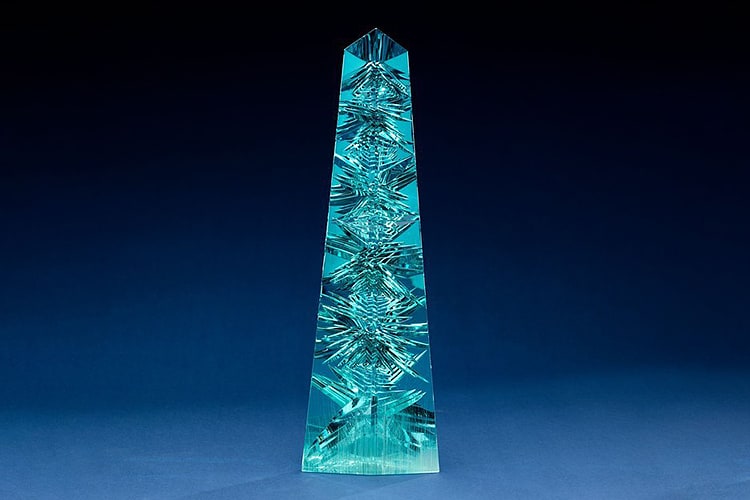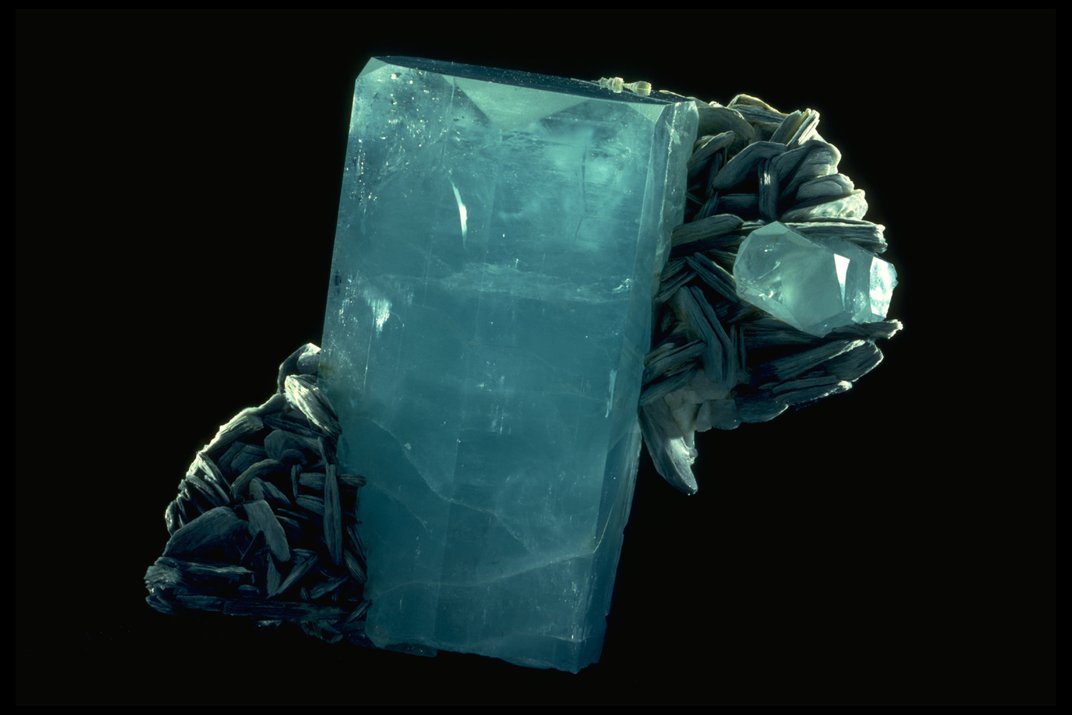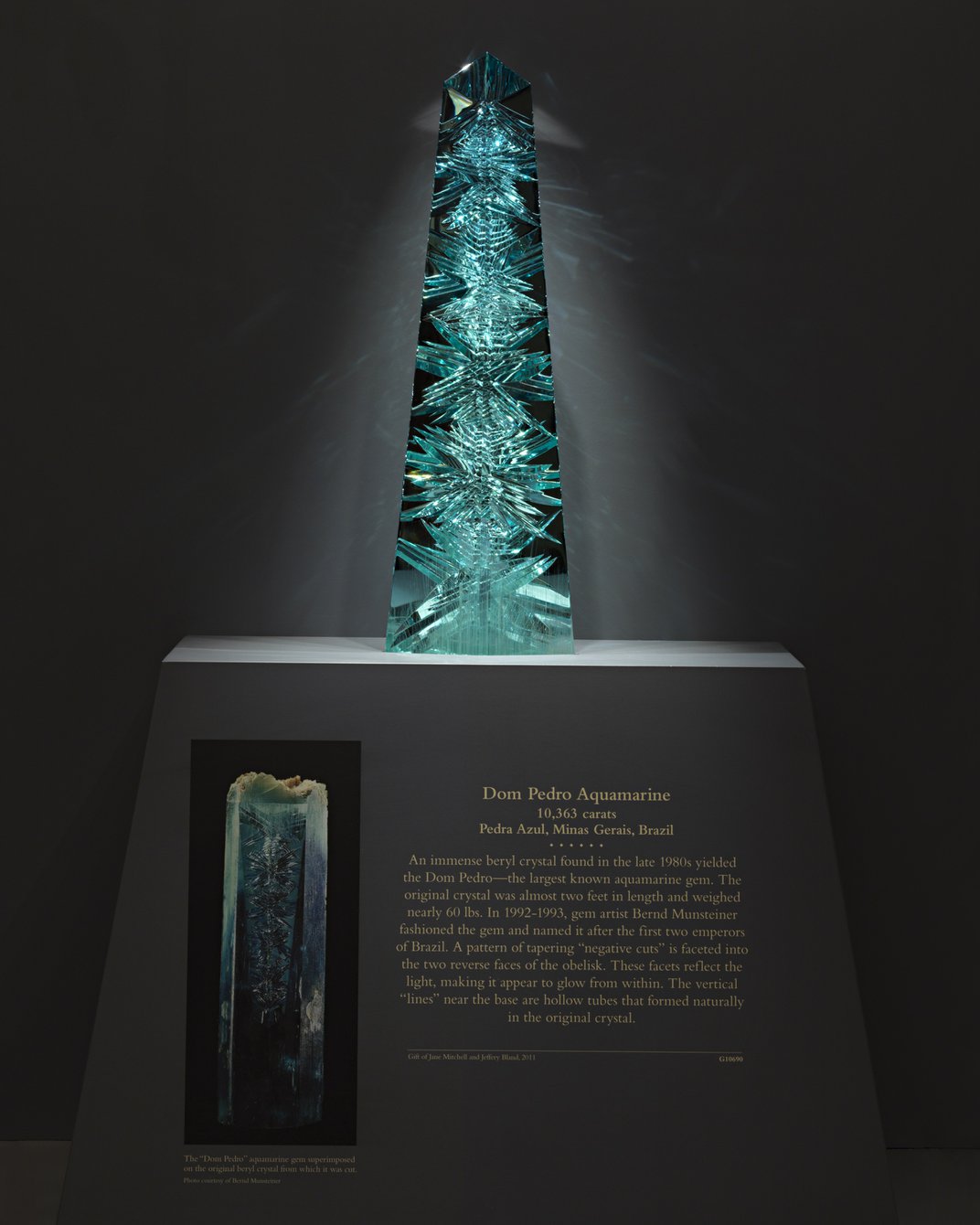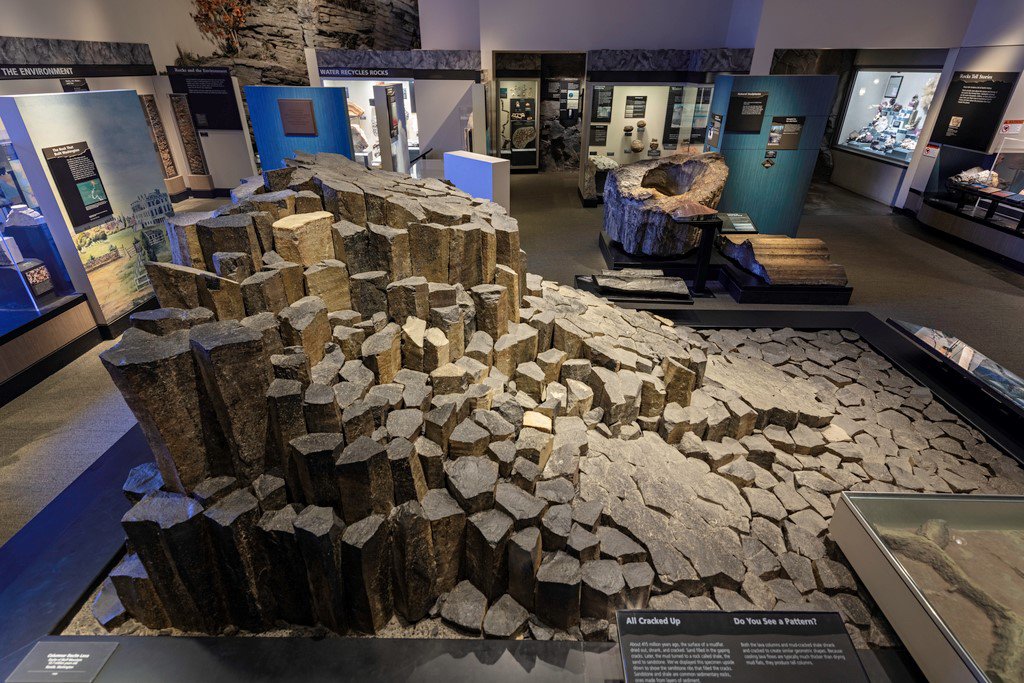Dom Pedro: The World’s Largest Aquamarine

Dom Pedro aquamarine was cut from a 100-pound crystal that was mined in the late 1980s. It weighs around 4.6 pounds, making it one of the largest aquamarine gemstones in the world. (Donald E. Hurlbert, Smithsonian)
For those who study what happens when magma and crust collide, igneous rocks like pegmatites are a welcome sight. But in addition to holding clues about Earth’s mineral and geologic processes, pegmatites deposits are known for containing diverse and richly colored mineral crystals that can be cut into spectacular gems. One of the largest — if not best — example is the Dom Pedro Aquamarine.
This roughly 4.6-pound gem was cut from a massive 100-pound aquamarine crystal unearthed in the late 1980s. Today, it sits in the Smithsonian’s National Museum of Natural History, enticing visitors to explore the Hall of Geology, Gems, and Minerals and inspiring curiosity about the crystals and minerals resting inside Earth’s rocks.
“It doesn’t look like most gems people are used to looking at, like ones in pieces of jewelry. It draws people into the gallery and gives us an opportunity to show how every gem, just like this aquamarine, started out as a mineral crystal that formed in the Earth,” said Dr. Jeffrey Post, Curator-in-Charge of Gems and Minerals at the museum.
Journey From the Center of the Earth
Although aquamarines are known for their “color of the sea” blueish-green color, they are made of the same mineral, called beryl, as gems like green emeralds, pink morganites and yellow heliodors. These gems all start as high-quality beryl crystals. Each gem’s respective color comes from impurities within beryl’s mineral composition. For example, aquamarines are caused by adding two types of iron atoms to beryl as it forms.
“When you grow pure beryl crystals in a lab, they’re colorless. But it turns out Earth is a pretty dirty place to grow crystals, so natural crystals always contain some impurities,” said Post. “In the case of aquamarine, iron gets trapped in beryl as its growing. Then, light interacts with that iron and gives the aquamarine its color.”
Beryl is commonly found in pegmatite formations, which occur when hot magma pushes from deep in the earth up into the crust and cools into a granite body. As the molten rock cools, it crystallizes. How it crystallizes depends on the concentration of water present within the magma.
“As this magma body is cooling, the more water-rich part is the last to crystallize and rises to the top. It becomes like scum on a cooling pot of soup,” said Post. “And in this water-rich portion, there is also an accumulation of elements, such as boron, beryllium, and lithium that don’t easily fit into the crystal structures of the minerals in the granite.”
When those elements swirl around the top layer of crystallizing water rich magma, they cool and form minerals like beryl. Sometimes, they absorb other leftover atoms too like the iron that turns beryl into aquamarine.
“When everything is finally cooled, you have a pegmatite body composed mostly of large crystals of quartz and feldspars, and they sometimes have cavities. Miners try to locate these cavities, or pockets, and if they are lucky they will have big crystals in them, perhaps of beryl,” said Post. “That’s how the Dom Pedro aquamarine was found.”

Aquamarine is a type of beryl, a mineral composed of beryllium, aluminum, silicon and oxygen. The aquamarine crystal shown here and cut gems get their blue color and green undertones from iron impurities. (Chip Clark, Smithsonian)
Sculpting With An Unusual Medium
The Dom Pedro was found in a Brazilian pegmatite mine and named after Brazil’s first two emperors. The original crystal initially weighed over 100 pounds but shattered into three pieces during its excavation. The largest piece, which was roughly 60 pounds, then traveled to the studio of a famous gem artist in Germany who sculpted it into the obelisk shape it has today.
“At the bottom of the obelisk, you’ll see a series of parallel vertical lines, which are hollow tubes, imperfections, that formed when the crystal was growing,” said Post. “The artist decided to leave them in the sculpture because those imperfections are part of the story for this crystal’s formation.”
Once an obelisk gem sculpture, the Dom Pedro was then sold, and later donated by Jane Mitchell and Jeffery Bland to the Smithsonian’s National Gem and Mineral Collection. It now lives 30 feet from the Hope Diamond, greeting museumgoers as they explore the Hall of Geology, Gems and Minerals in-person and virtually.
“For all our gems, we want people to see them and realize that the Earth is an amazing place, and that science is more interesting than they may have thought,” said Post.
 The Dom Pedro aquamarine resides in the museum’s Hall of Geology, Gems, and Minerals, where it has inspired visitors virtually and in person to think about the natural wonders of the world. (James Di Loreto, Smithsonian)
The Dom Pedro aquamarine resides in the museum’s Hall of Geology, Gems, and Minerals, where it has inspired visitors virtually and in person to think about the natural wonders of the world. (James Di Loreto, Smithsonian)
A Gem of a Collection
By studying how crystals, minerals and rocks form, mineral scientists at the National Museum of Natural History are learning more about the world’s geologic past and present. For example, rocks can teach researchers what early Earth’s mineral composition may have been, while meteorites let scientists analyze minerals in the asteroid belt.
All of these specimens, whether on display in the Hall of Geology, Gems and Minerals or stored in museum’s collection, are cared for by the mineral sciences department.
“Every one of these started out as a mineral that formed in the Earth. Our collection is a great way to show people that story,” said Post.

The museum’s mineral sciences collection contains more than gorgeous gemstones. It also houses rocks and minerals that scientists study to understand Earth. Museumgoers can see these specimens in the Hall of Geology, Gems and Minerals alongside the Dom Pedro. James Di Loreto, James D. Tiller, and Lucia RM Martino, Smithsonian
Source: Smithsonian